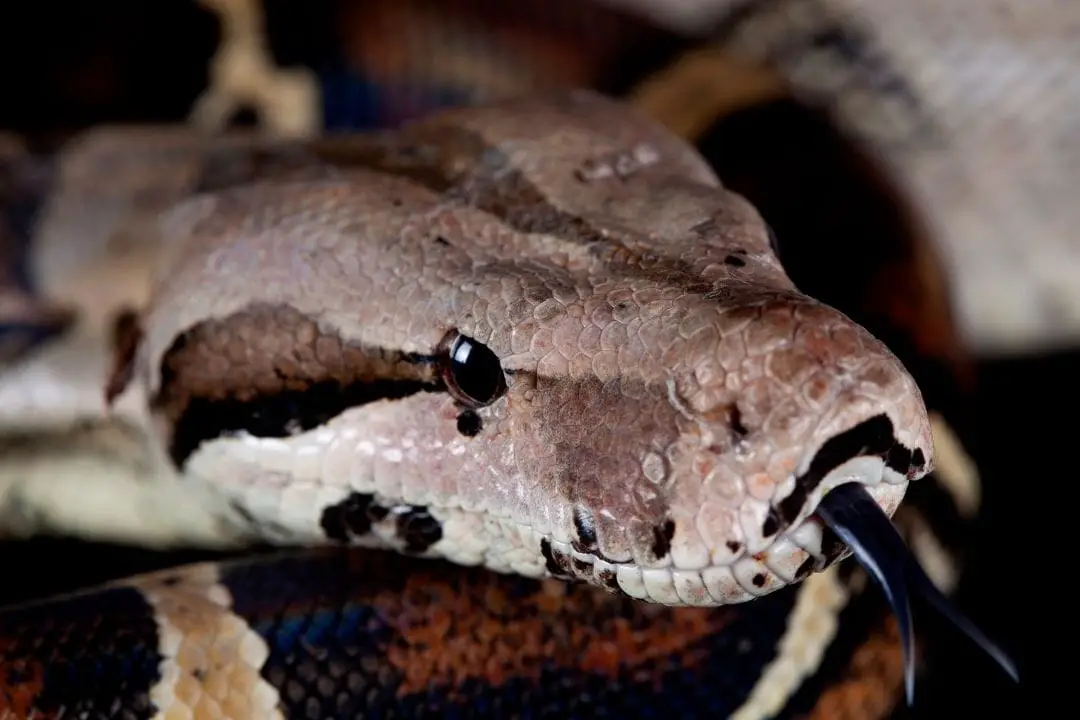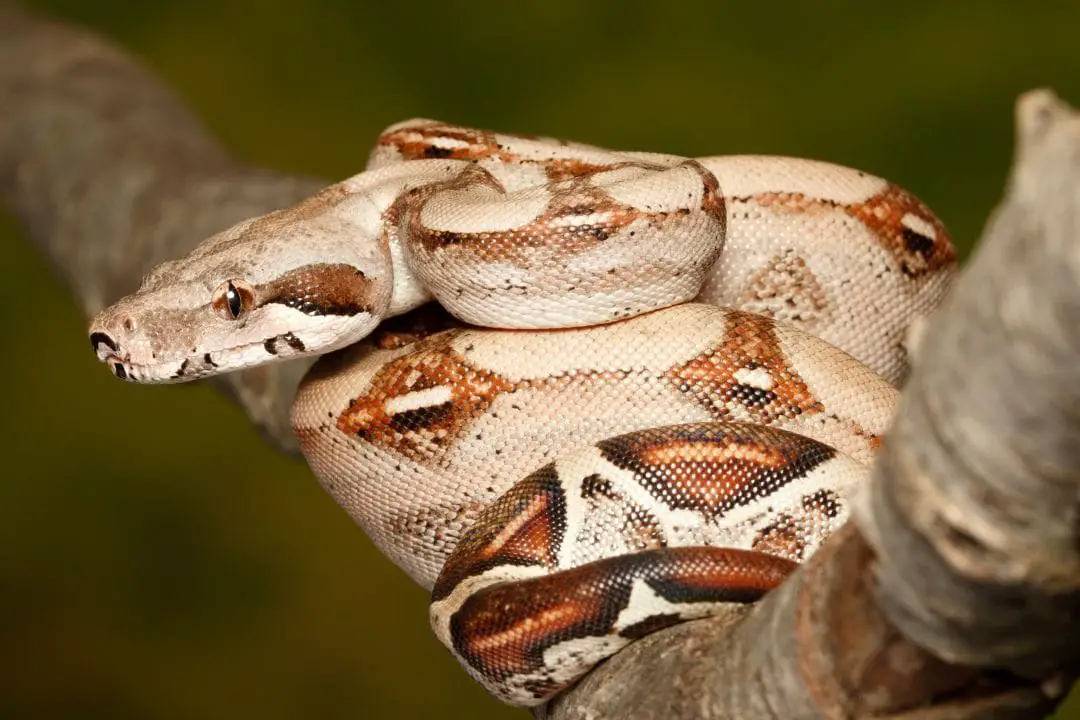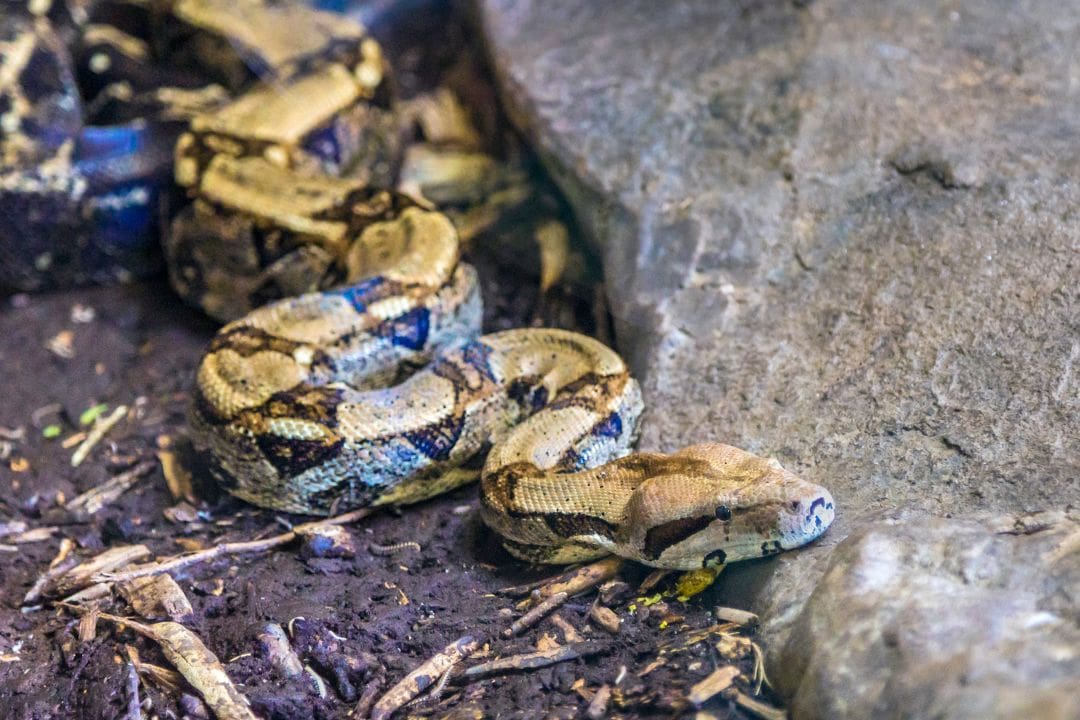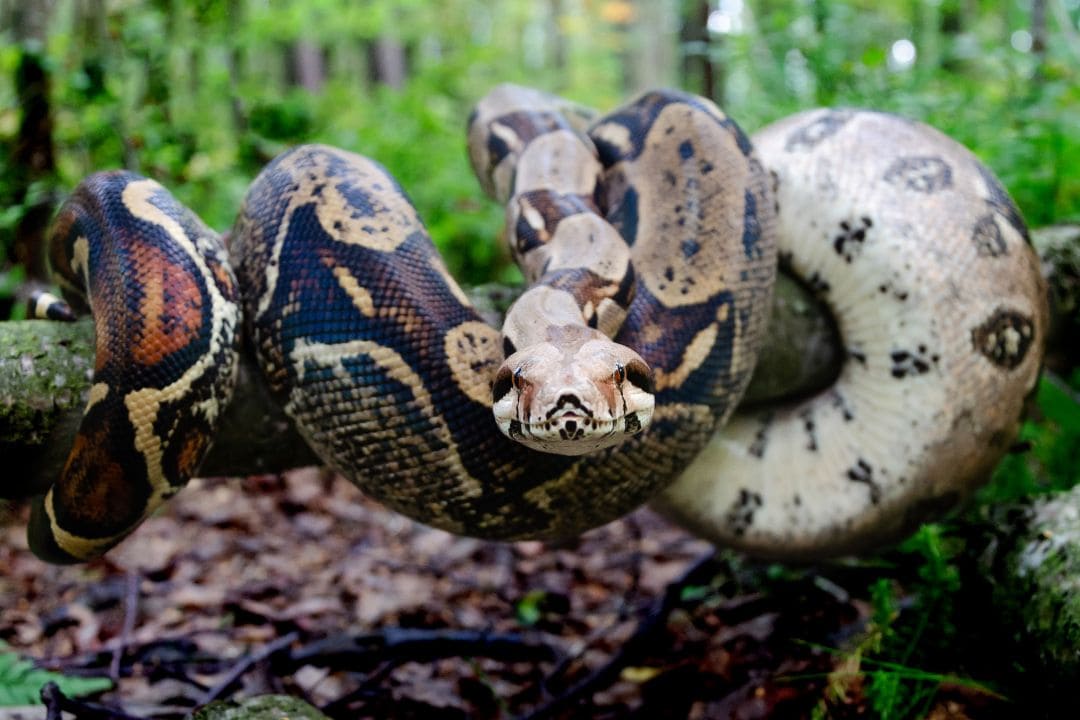Boa constrictors (Boa constrictor) and the other two members of the Boa genus (Boa imperator and Boa sigma) are very popular pet snakes.
These animals have been in the pet industry for decades, but they are very misunderstood. You may be wondering if a boa can kill you and how to handle one safely.
Can a Boa Constrictor kill you?
Boa constrictors are not large or strong enough to kill an adult. Even newborns are too large to be really viewed as potential prey by a healthy boa.
About Boas
Boa constrictors are shy ambush predators that prefer to avoid conflict with humans whenever possible. While some subspecies can reach lengths of 12 feet or more, these snakes are proportionally slim and weigh far less than other constrictors that reach similar or greater lengths.
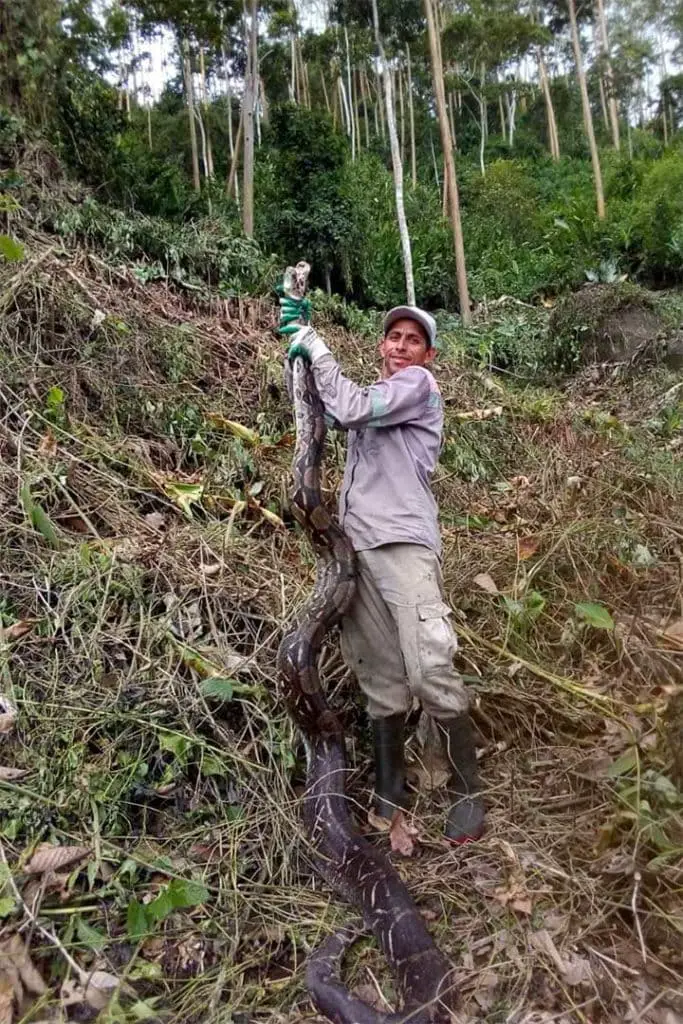
Many of the common subspecies and the two other commonly kept Boa species stay under 8 feet. Both Boa imperator and Boa sigma are commonly sold as boa constrictors and neither snake gets much longer than 6 feet long.
Boas typically can’t eat anything much wider than the thickest part of their body. This translates to prey items that weigh around 10% of the snake’s weight.
Anything larger doesn’t register as prey.
Most boas will view anything much larger as a threat. Humans register as predators, even very young children.
Since most subspecies of boa constrictors rarely weigh more than 30 pounds, humans are well out of the range of prey size.
Can Boas Hurt a Human?
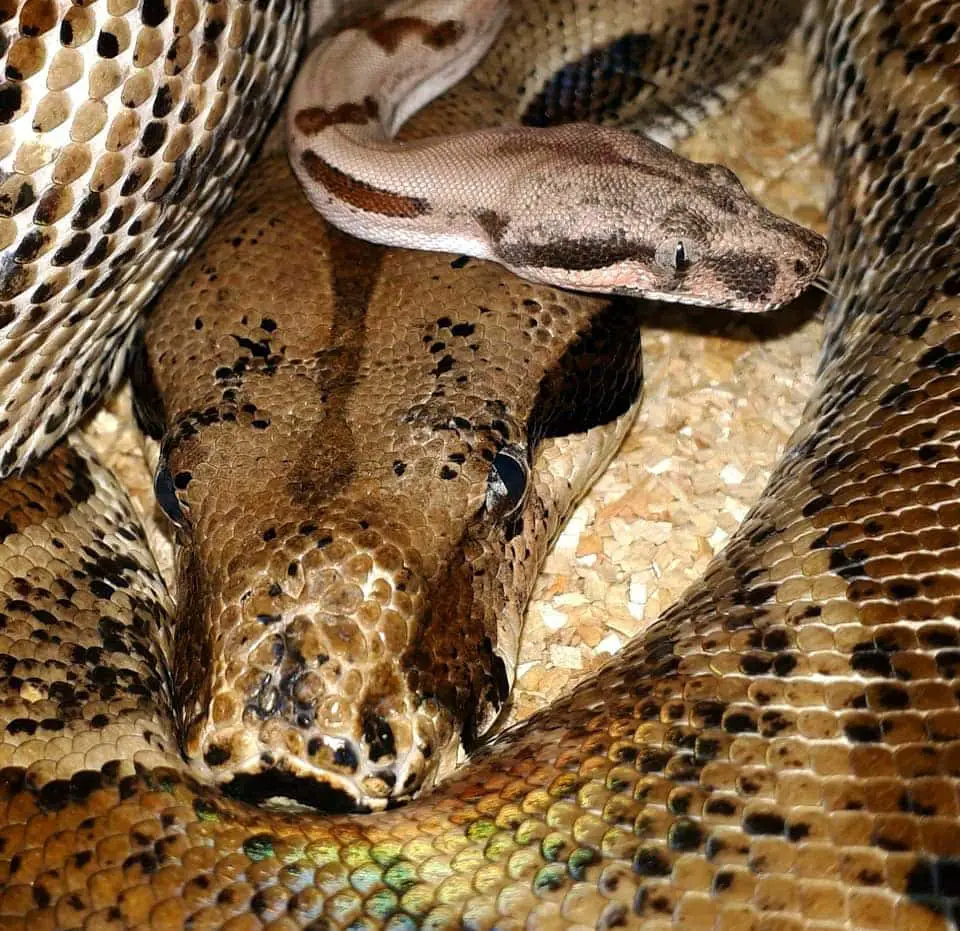
A bite from a fully grown boa can hurt since they have a mouth full of backward-facing teeth meant to help force prey down the snake’s throat. Most bites from boas are defensive bites.
This is a quick bite or several bites meant to drive off a predator or other potential threat. These can hurt but are only really dangerous if the snake bites your face and risks hitting your eyes.
Children are a bit more vulnerable to bites causing major damage, but children should never be near a boa without supervision.
The biggest injury reported to an adult from a boa resulted in eye damage, but the snake was ill and bit to defend itself.
If the bite is accompanied by constriction, that can be more dangerous. Constriction kills prey by cutting off blood flow and causing a quick death from this.
Humans are a bit too large for this to work unless the snake wraps around the neck. Generally speaking, this is rare but possible if the person can’t get the snake off in time.
There have been reports of snakes harming humans, but these are rare and are normally cases of defensive bites or even salmonella reported as an injury.
Safe Handling
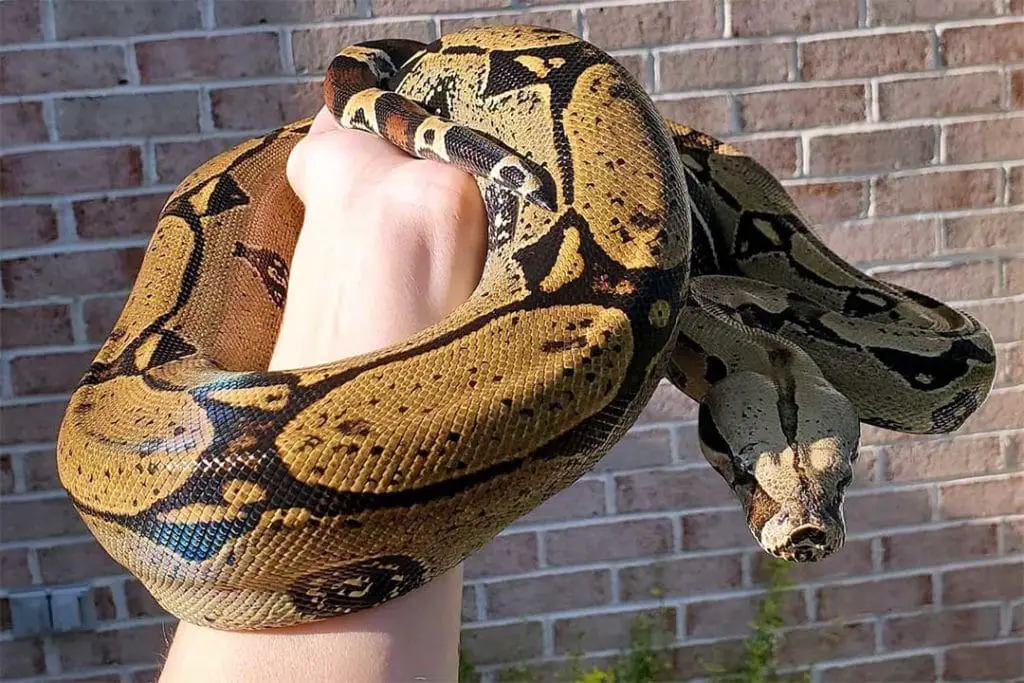
Handling safety is important when you own any animal. Any animal can hurt you if you don’t understand its body language and species-specific needs.
Wild animals like snakes are more unpredictable than domesticated animals, but all animals can turn on humans and cause injuries.
The first step to safe handling is to wash your hands before and after handling snakes.
Salmonella can be transmitted to humans by handling reptiles. You should always wash your hands and change your clothes if your snake crawls over your clothing.
You also need to take the time to train your snake to be used to handling and learn its body language. A relaxed boa will have a slowly flicking tongue and will typically be eager to explore its surroundings.
A boa that is ready to strike will have fast tongue flicks, be tensed up, and likely coiling its body into the classic “S” striking position.
You should also know how to handle a snake without alarming it. Always approach a snake from below, never from above since this registers as a predator. Never grab the head since most boas are head shy and may strike.
Do not squeeze or restrain your boa since this will make the snake think you are trying to eat it and result in a defensive strike.
Use your hands to gently guide your boa where you want it to go by placing your hand under its body just below the head.
Finally, never grab a boa by the tail. This can cause pain and serious injury to the snake and will result in the animal lashing out.
Once your snake is large enough that you can’t remove it by yourself if it tries to constrict you, it is time to always have an assistant with snake experience to help with handling and feeding.
This is typically needed once a boa reaches 8 feet, but if you are not very strong you should get an assistant once the snake is over 6 feet.
Children should never handle any snake by themselves. There should always be an adult present until the teenage years, though smaller teenagers will need help for longer and with smaller snakes.
Anyone who isn’t experienced with snakes should have help for any snake that is over a year old. Boas aren’t for beginner snake keepers, but you should start with a baby boa constrictor so you have time to learn how to handle the snake.
What to Do if a Boa Bites
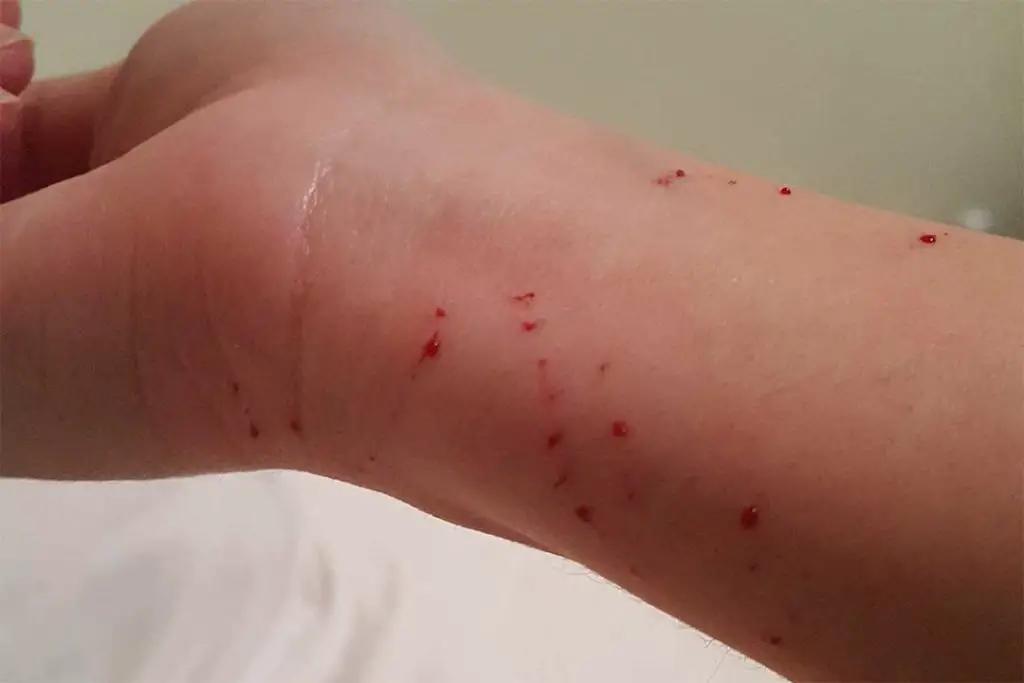
If your boa bites you and will not release, the first step is to stay calm. Pulling away can injure you and the snake badly. If the snake doesn’t release you, you can push into the snake or pour water or mouthwash near the bite to convince the snake to release you.
This should free you. If the snake is trying to constrict you, you can try to unwrap the snake. If it is too large for you to do this, your assistant should be ready to help.
If the snake tries to wrap around your neck, get an arm or hand between your neck and the snake to make sure the snake can’t cut off your airway.
Most injuries from boas only require basic care. Stitches or prescribed antibiotics are rarely needed.
Be sure to never immediately return a boa if it bites you since it will learn that biting will end a handling session.
Conclusion
Boas are large, but not strong enough to be a serious threat to humans.
Basic safe handling and good care for your boa constrictor will prevent most problems. If you have any comments or questions, leave them below.
